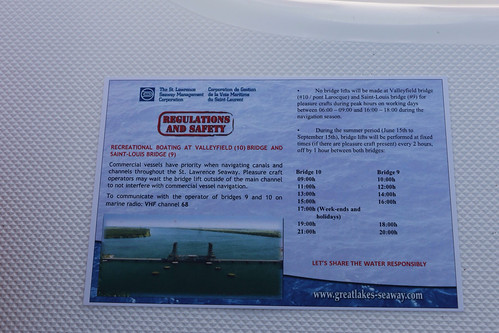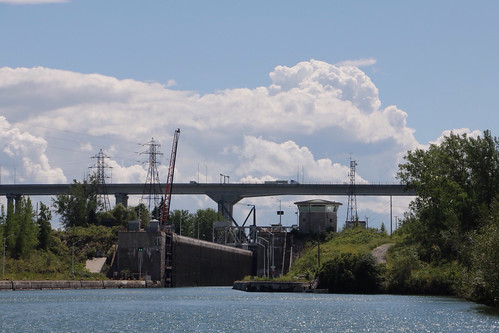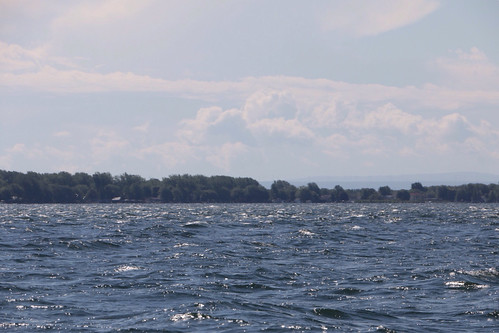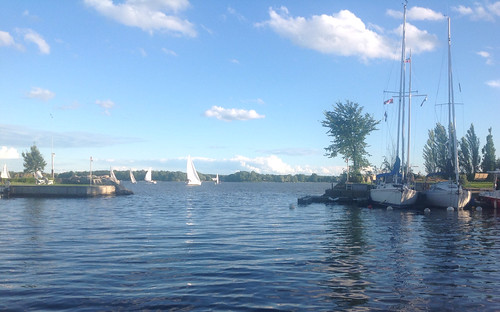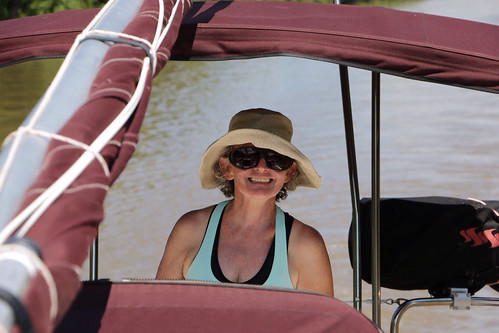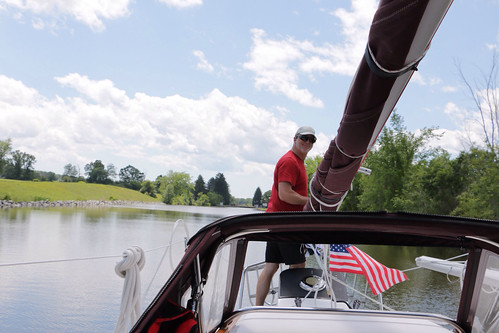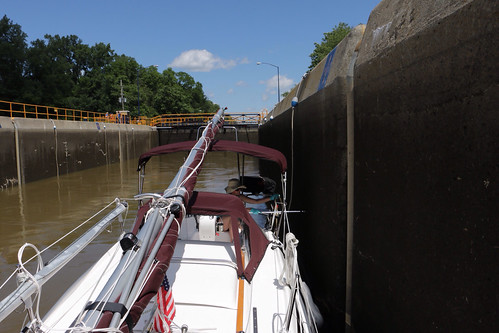
Aug 4, 2015 | Flotsam
Before getting on with what we did today,
I have to comment on the Valleyfield Marina.
I did mention yesterday that it felt like a five star hotel…
Today,
when we were ready to leave,
we handed in our swipe key
and were escorted back to our Quai
…by golf cart,
asked if we enjoyed our stay
and were bid a safe journey home.
Very nice!
Boaters’ Notes
From Valleyfield to the Beauharnois Locks
there are two bridges that all boats have to pass
regardless of air draft
and there is a schedule….
…and these BFB’s
(our name for them – cleaned up a bit for you…
Big Fluvial Boats)
have priority…

But we, as small as we are,
have the pleasure of stopping traffic on two highways…

…for free…
There are two locks at Beauharnois
and we spent 3 hours transiting the two,
us and three other boats
because priority goes to the commercial vessels.
We took advantage of the time,
cracked a bottle of wine
and enjoyed some paté, cheese and bread…
so very thankful to be back in the land of really good French bread.
But on the far side of the waiting,
we sailed
a magnificent sail.
…our favourite friendly club,
Baie d’Urfé Yacht Club
on Lake Saint-Louis.
“Can we stop for the night?”
….and the answer is always the same…
“Sure”.
Jul 15, 2015 | Flotsam
Before beginning this summer’s adventure
we a lot about various accounts of boaters
travelling through the multitude of locks on the waterways.
High concrete walls,
rushing water currents
and the slime that builds up over the years
can pose risks to unprepared boaters.
Last year we locked through 54 times without incident
while traversing the Rideau Canal
and Saint Lawrence Seaway
using good balance and a couple of docking poles to keep us pushed off the lock walls,
but we thought it wise to add a couple of improvements for this year’s trip.
Fender Boards
The idea of fender boards is to protect the hull from rubbing the walls of the lock
or when docking at pilings.
It also serves to keep the slime from the fenders,
which in turn will hopefully keep the boat cleaner.
Most boaters we have seen use lengths of 2″x6″.
We liked the idea of PVC instead of wood
as we will also be able to use the pipe to support the Genoa
and main furler during winter storage,
and when not in use during the season can be used to house our fishing rods.
It might even come in handy for safer ‘rafting up’ with boat friends.
What we purchased…
6′ of 2″ PVC pipe
a length of inexpensive nylon line
Two 2″ caps to ‘soften’ the edges of the pipe (and to keep spiders and other critters out)
and gloves – our choice was garden gloves with rubbery palms.
The slimy concrete walls can be really nasty and super slippery as I found out last year
when I lost my balance and put my hand out without thinking to grab the wall
and almost went overboard.
Easy and inexpensive to make…
9/16″ hole drilled through the pipe, 6″ in from each end.
Two 10′ lengths of line run through each hole and secured with a figure 8 stopper knot.
2″ caps secured on each end with silicone (as I mentioned, I’m not a big fan of resident spiders)
There is also a good article in
Practical Sailor explaining details of ‘why’s’ and ‘how to’s’.
To date, on our New York Loop
we have yet to use the fender board
after locking through several times
but those gloves have proven a great addition.
Pictures will be available as always until I can fix my Blogger limit issue
on our R.E.D. sails facebook page:
Or on flickr:
You can find me by searching either
Kathy Haslam
or happykay27

Jun 24, 2015 | Flotsam
Somewhere in the course of the day,
I decided I wanted to be the one in control of locking.
Lock #9 on the Champlain Canal was the one.
I hailed the lock master
that S/V R.E.D. was approaching southbound…
I felt confident…
François was very supportive and patient…
I brought R.E.D. slowly into the lock…
Lines secured with no problem…
YAY!!!!


